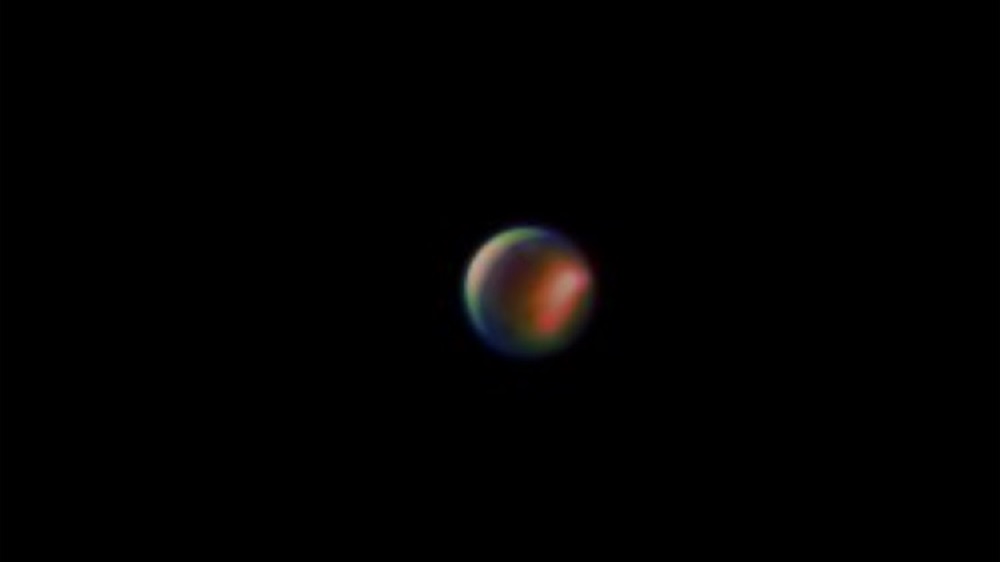On August 24th, a vital instrument aboard the James Webb Space Telescope (JWST) experienced a malfunction that prompted the mission team to take it offline. The problem occurred when the Mid-Infrared Instrument (MIRI) experienced increased friction in one of its wheels while in Medium-Resolution Spectroscopy (MRS) mode. The mission team took MIRI offline while they attempted to diagnose the problem, leaving the observatory to continue making observations in other modes.
This came shortly after Webb was hit by a large micrometeoroid in late May that caused damage to one of its primary mirror segments. Luckily, the damage this caused will not alter the telescope’s performance, and the mission team announced earlier this month that they had restored the MIRI to operational status. With everything in the green, Webb has once again turned its infrared optics to the cosmos and acquired some breathtaking images.
This includes a new image of Saturn’s largest moon Titan, which recently appeared online. Titan as seen by #JWST ?(up-scaled 2x, and using a VIMS-ish colormap, R = 1. 4 um, G = 2.
1 um, B = 4. 8 um) pic. twitter.
com/wF8lQeNGVv— Michael Radke (@RadPlanets) November 15, 2022 The image was processed and uploaded to Twitter by Michael Radke, a Ph. D. student who studies planetary atmospheres using laboratory photochemistry experiments at John Hopkins University (JHU).
According to Radke, the image was acquired between November 4th and 5th, which he doubled in scale and added red, green, and blue to represent different wavelengths (R = 4. 8 um, G = 2. 1 um, B = 1.
4 um). These values were based on the Cassini mission’s Visible and Infrared Mapping Spectrometer (VIMS). These colors appear to correspond to the absorption spectrum of carbon monoxide (green), methane (blue), and nitrogen (red), the gases that make up the majority of Titan’s atmosphere.
Titan also appears to be illuminated from the upper left in the image, which creates the impression of a sunrise. Planetary scientist, author, and space journalist Emily Lakdawalla suggested that the source could be light reflected from Saturn’s atmosphere. This image also provides a glimpse of the types of science operations Webb will conduct with Titan and other bodies in our Solar System.
Its powerful instruments and near- and mid-infrared imagining capabilities will allow astronomers to study the chemical composition of atmospheres in detail. Titan is of particular interest because it is the only moon in our atmosphere with a substantial atmosphere – where the air pressure is roughly 50% greater than Earth’s. Like Earth, TItan’s atmosphere is predominantly composed of nitrogen gas (94%), with hydrocarbons like methane making up the second largest fraction (5.
65%). Titan is the only other body in the Solar System with a precipitation and evaporation cycle. Whereas Earth has a water cycle, Titan has a methane cycle, where methane forms clouds in the moon’s atmosphere, falls to the surface as rain, and replenishes methane lakes.
In addition, Titan’s atmosphere is rich in chemical processes as hydrocarbons are broken down by solar radiation into their constituents (i. e. , carbon, hydrogen, oxygen, and nitrogen) and then form new molecules that percolate and settle on the surface.
Titan’s atmosphere and surface also possess something that no body other than Earth does: a rich prebiotic environment and organic chemistry. For this reason, astrobiologists have suspected that Titan may be one of the most promising places to search for extraterrestrial life. For these reasons, Webb needs its instruments in working order, particularly MIRI and the Near-Infrared Spectrograph (NIRSpec).
These will obtain high-precision spectra from Titan’s atmosphere to observe these molecules and processes at work. These studies will build on previous efforts by the joint NASA-ESA Cassini-Huygens mission, which studied Saturn and its satellites from 2004 to 2017. Both the orbiter and lander studied Titan’s atmosphere in depth and made many profound discoveries.
The more detailed information that Webb will obtain will be used to study Titan’s seasonal cycles, leading to more detailed climatic models. This will help pave the way for missions like NASA’s Dragonfly rotorcraft that will launch for Titan in 2027, arriving sometime in the 2030s. The post With JWST Fully Operational Again, we get Images Like This: Saturn’s Moon Titan appeared first on Universe Today.
.
From: universetoday
URL: https://www.universetoday.com/158722/with-jwst-fully-operational-again-we-get-images-like-this-saturns-moon-titan/



